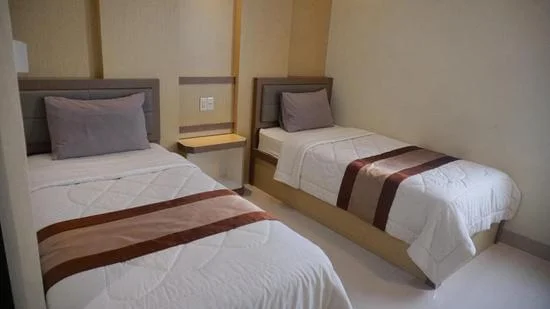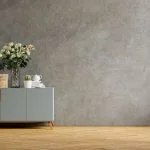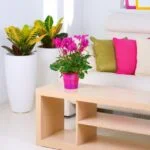What decorations do people use in their homes in Spain? Home decor holds significant cultural importance in Spanish households, influenced by various regions, traditions, and beliefs. From traditional elements to modern trends, the choice of decorations reflects the rich cultural heritage of Spain.
With its diverse regions including Andalusia, Catalonia, and the Basque Country, each with its own unique traditions and customs, home decor in Spain is a reflection of the country’s rich cultural diversity. This article will delve into the traditional, religious, Mediterranean-inspired, festive, regional, and modern influences on home decor in Spain.
Additionally, we’ll explore how art and architecture play a role in shaping the decoration choices in Spanish homes. Let’s dive into the world of Spanish home decorations to gain a deeper understanding of this culturally significant aspect of Spanish lifestyle.
Traditional Spanish Decorations
In Spanish culture, home decorations hold significant cultural and traditional value. The different regions of Spain, such as Andalusia, Catalonia, and Basque Country, have unique influences on home decor. These regions contribute to the diversity seen in Spanish homes, with each area incorporating specific elements into their traditional decorations. For example, in Andalusia, you can find intricate ceramic tiles and colorful textiles adorning the walls and floors of homes, while in the Basque Country, woodcarvings and tapestries are more prevalent.
Traditional Spanish decorations often embrace a rustic and cozy aesthetic. One common decorative element found in many Spanish homes is the use of vibrant ceramic tiles known as “azulejos,” which are often used to decorate walls, floors, and even tabletops. These tiles come in various patterns and colors, adding a touch of elegance and history to the space. Other traditional decorations include hand-painted pottery pieces, intricately patterned textiles like flamenco shawls or mantillas, and wooden furniture with ornate carvings.
Religious influences also play a significant role in shaping home decor in Spain. Many households display religious icons such as crosses or statues of saints as part of their decoration. The prevalence of Catholicism in Spain has led to the incorporation of religious symbols into daily life and home decor. These religious elements not only serve as decorations but also hold deep spiritual significance for many Spanish families.
Mediterranean-inspired decor elements are popular choices for Spanish homes due to the country’s Mediterranean climate and lifestyle. The use of natural materials such as wood, wrought iron, and terracotta is common in Spanish home decor. Additionally, bright-colored textiles like vibrant rugs or curtains add a pop of color to spaces while reflecting the lively Mediterranean atmosphere. All these elements combined create a warm and inviting ambiance within Spanish households.
| Traditional Decorations | Cultural Significance |
|---|---|
| Azulejos (ceramic tiles) | Reflecting history and elegance |
| Religious icons | Spiritual significance for families |
| Mediterranean-inspired elements | Creating a warm and inviting ambiance |
Religious Influences on Home Decor
In Spain, religious influences play a significant role in shaping the decorations used in homes. Religious icons and symbols are often incorporated into Spanish home decor, reflecting the deeply rooted Catholic traditions in the country. Crucifixes, images of saints, and religious artwork are commonly found in Spanish households, serving as a testament to the strong religious beliefs of the people.
The influence of religion on home decor in Spain goes beyond mere symbolism; it also impacts the overall aesthetic of the decorations. Many traditional Spanish homes feature ornate and elaborate religious ornaments that add a sense of grandeur and solemnity to the space. These decorations often become focal points within the home, showcasing the importance of faith and spirituality in Spanish culture.
Furthermore, religious celebrations and festivities have a profound impact on home decor in Spain. During events such as Semana Santa (Holy Week) and Christmas, Spanish homes are adorned with specific religious-themed decorations that hold special significance during these times of religious observance. From nativity scenes to ornate processional statues, these festive decorations further emphasize the close relationship between religion and home decor in Spain.
| Religious Influence | Home Decor |
|---|---|
| Crucifixes | Commonly found in Spanish households |
| Ornate religious ornaments | Add grandeur and solemnity to spaces |
| Nativity scenes | Special significance during festive seasons like Christmas |
Mediterranean Influence on Home Decor
The warm and sunny climate of the Mediterranean region greatly influences the choice of home decorations in Spain. The abundance of natural light and the desire to embrace the outdoors is reflected in the decor choices of Spanish homes.
An important aspect of Mediterranean-inspired home decor is the use of natural materials such as wood, stone, and terracotta. These elements bring a sense of warmth and comfort to living spaces, creating a welcoming and cozy atmosphere that is characteristic of Mediterranean homes.
In addition to natural materials, Mediterranean-inspired home decor often features light and airy colors such as white, cream, and soft pastels. These colors are chosen to reflect the bright sunlight that fills Spanish homes, creating an open and refreshing feel within the living space. Furthermore, indoor-outdoor living is emphasized through the use of large windows, outdoor terraces, and gardens, allowing for a seamless transition between indoor and outdoor spaces.
Specific Decor Elements Found in Spanish Households
One of the most iconic Mediterranean-inspired decor elements found in Spanish households is the use of vibrant tiles known as “azulejos.” These decorative tiles are commonly used to adorn kitchen backsplashes, bathroom walls, or even entire floors. The intricate patterns and bold colors of azulejos add a touch of character and charm to Spanish homes, while also serving as a nod to the rich artistic heritage of Mediterranean culture.
Another popular decor element influenced by the Mediterranean lifestyle is the presence of potted plants throughout the home. Indoor greenery not only adds a natural touch to interior spaces but also reflects Spain’s love for gardening and horticulture.
The presence of potted plants brings life into the home, further blurring the lines between indoor and outdoor living. Additionally, traditional wooden furniture with detailed carvings or wrought iron accents are commonly found in Spanish households, adding an old-world charm that complements other Mediterranean-influenced decor elements.
The incorporation of these specific design elements into Spanish homes showcases how deeply rooted Mediterranean influence is in their decorating style. From natural materials to vibrant traditional tiles and plant-filled interiors, it’s evident that Spain’s unique connection to its beautiful surroundings greatly shapes its approach towards home decor.
Festive Decorations
One of the most significant aspects of home decorations in Spain is the influence of various festivals and celebrations. These joyful occasions play a vital role in shaping the type of decorations used in Spanish homes throughout the year. From religious festivities to traditional cultural events, each celebration brings its unique set of decorations that hold deep cultural significance.
Traditional Festive Decorations
During festivals such as Semana Santa (Holy Week) and Dia de los Muertos (Day of the Dead), Spanish homes are often adorned with religious icons, intricate altars, and vibrant floral arrangements. These decorations are not only visually stunning but also reflect the strong religious beliefs and traditions deeply embedded in Spanish culture. Additionally, during festive occasions like Feria de Abril in Seville, colorful paper lanterns and streamers are hung throughout homes, adding a lively and celebratory ambiance.
Significance of Festive Decorations
The use of festive decorations in Spanish homes serves as a way to honor and commemorate cultural traditions and religious practices. These decorations also create a sense of community and connection among family members and neighbors during these joyous occasions. The vibrant colors, symbols, and motifs found in festive decorations serve as a visual representation of the rich history and heritage of Spain’s diverse regions.
Regional Variations
It’s important to note that different regions within Spain may have their own unique festive decorations that are specific to local traditions and customs. For example, during La Tomatina festival in Buñol, households may display tomato-themed decor as a nod to this famous tomato-throwing event.
Similarly, during Las Fallas festival in Valencia, intricately crafted ninots (papier-mâché figures) are displayed around homes before being ceremoniously burned at the end of the festival. These regional variations add further depth to the diversity of festive decorations seen throughout Spain.
As you can see from these examples, festive decorations play an integral role in Spanish home decor by reflecting the rich tapestry of cultural traditions and celebrations that define the country’s heritage.
Regional Differences in Home Decor
When it comes to home decor in Spain, the country’s diverse regions play a significant role in influencing the choice of decorations. Each region has its own unique culture and traditions, which are often reflected in the way homes are decorated. From the vibrant colors of Andalusia to the rustic simplicity of Castile, the regional differences in home decor contribute to the rich tapestry of Spanish interior design.
To better understand what decorations people use in their homes in Spain, it’s essential to take a closer look at the distinct regions within the country. Here are some examples of regional decorations and their cultural significance:
- Andalusia: Known for its colorful and lively decor, Andalusian homes often feature elements such as ornate ceramic tiles, wrought iron fixtures, and vibrant textiles. The use of bright colors reflects the region’s rich heritage and its Moorish influence.
- Catalonia: In contrast to Andalusia, Catalan decor tends to be more understated and modern. Homes in Catalonia may showcase minimalist furniture, clean lines, and contemporary art pieces. The influence of Catalan modernism can be seen in the architectural details and decorative elements.
- Basque Country: The rugged landscapes of the Basque Country inspire a more rustic and natural approach to home decor. Wood accents, earthy tones, and traditional Basque textiles are commonly used to reflect the region’s connection to nature and tradition.
Throughout Spain, each region offers its own unique interpretation of home decor that speaks to its cultural identity. Whether it’s through traditional furniture styles or locally-inspired decorative pieces, regional differences play an important role in shaping the overall aesthetic of Spanish homes.
Therefore it is no wonder that when it comes down do asking what decorations do people use in their homes in Spain this question leads us directly into exploring all these different influences present across this country.
Modern Trends in Spanish Home Decor
In recent years, modern trends in Spanish home decor have been influenced by a combination of traditional elements and contemporary styles. The result is a unique fusion that reflects the evolving lifestyle and design preferences of the Spanish people. From furniture to color schemes, here are some of the key modern trends shaping home decorations in Spain:
- Minimalist Design: Many Spanish homeowners are embracing minimalism, favoring clean lines, open spaces, and simple forms. This trend emphasizes functionality and simplicity, creating a more streamlined and uncluttered look in homes.
- Neutral Color Palettes: Neutral colors such as white, beige, and gray have become popular choices for walls, furniture, and decor accessories. These colors create a sense of tranquility and sophistication in living spaces.
- Natural Materials: There is a growing preference for natural materials such as wood, stone, and rattan in modern Spanish home decor. These materials add warmth and texture to interiors while also promoting sustainability.
Furthermore,lastly, there has been an increased interest in integrating technology into home decorations, with smart lighting systems, automated blinds, and sleek entertainment units becoming common features in modern Spanish homes.
As lifestyles continue to evolve,n it is clear that contemporary home decor trends reflect the desire for functional yet aesthetically pleasing living spaces. The combination of traditional influences with modern design concepts has resulted in a diverse array of decorative styles seen throughout homes in Spain today.
Ultimately,functionality merges seamlessly with visual appeal to create inviting living environments that cater to the needs of modern-day Spaniards.
This content supports the importance aspect on what decorations do people use in their homes in Spain.
The Influence of Art and Architecture
Art and architecture have long been integral to Spanish culture, and their influence extends to the realm of home decorations. Throughout history, Spanish art and architecture have been characterized by their intricate designs, vibrant colors, and rich cultural symbolism. As a result, these elements have played a significant role in shaping the decorative choices of individuals within Spain.
Spanish homes often feature decor inspired by iconic works of art and architectural styles from different periods in the country’s history. From the ornate patterns of Moorish design to the elaborate details of Baroque art, these influences can be seen in various decorative elements such as wall hangings, tapestries, and pottery.
The use of colorful ceramic tiles, known as “azulejos,” is a prime example of how Spanish homes incorporate artistic traditions into their decor. These tiles are often used to adorn walls, floors, and even tabletops, adding a distinct touch of artistic flair to interior spaces.
Furthermore, the architectural wonders of Spain, such as the Alhambra in Granada or Antoni Gaudí’s modernist buildings in Barcelona, serve as sources of inspiration for home decor. The intricate carvings and geometric patterns found in these architectural marvels often find their way into decorative items like furniture, lamps, and textiles.
Additionally, art movements such as Surrealism and Cubism have also left their mark on Spanish home decor through abstract paintings or sculptures that reflect the avant-garde spirit of these artistic movements.
Conclusion
In conclusion, the decorations used in Spanish homes reflect the rich cultural tapestry of the country, influenced by tradition, religion, climate, festivals, regional differences, and modern trends. Traditional Spanish decorations such as ceramic tiles, wrought iron fixtures, and colorful textiles play a significant role in preserving the heritage of the country. Additionally, religious influences are prominently displayed through the use of religious icons and symbols in home decor, emphasizing the deeply rooted faith and beliefs of the Spanish people.
The Mediterranean influence on home decor is evident through the use of bright colors, natural materials, and elements that evoke a sense of ease and relaxation. Festive decorations also hold great significance in Spain’s home decor as they represent various celebrations like Semana Santa (Holy Week) and Christmas. These festive decorations not only add beauty to the home but also signify cherished traditions.
Moreover, regional differences in home decor showcase the diverse cultures within Spain – from Moorish influences in Andalusia to Basque country traditions in northern Spain. Modern trends have also made their mark on Spanish home decor with contemporary designs reflecting an evolving lifestyle.
The influence of art and architecture can be seen through unique decorative elements inspired by renowned artists like Gaudi. In essence, what decorations do people use in their homes in Spain truly represents the vibrant and multifaceted cultural identity of this fascinating country.
Frequently Asked Questions
How Do People Decorate Their Homes in Spain?
In Spain, people decorate their homes with a mix of traditional elements and modern styles. You can find colorful and intricate tiles, wrought iron accents, and wooden furniture. The use of vibrant colors, such as red, yellow, and blue, is also common.
How to Decorate a Spanish Style Home?
Decorating a Spanish style home involves incorporating elements like terracotta floors, exposed wooden beams, and stucco walls. Adding decorative wrought iron grills or gates, as well as colorful ceramic tiles, can also enhance the overall look. Furniture made from dark wood with ornate carvings is often used to complete the Spanish aesthetic.
What Is Typical Spanish Interior Design?
Typical Spanish interior design often includes warm and earthy tones paired with vibrant accent colors like turquoise or terracotta. Rustic wooden furniture is popular along with ornate patterns in textiles and ceramics. Details like arched doorways, decorative tiles, and wrought iron fixtures can be found in many Spanish homes.

I’m thrilled to be your companion on this exciting journey through the world of home decor and design. With a passion for turning houses into homes and a keen eye for the finer details, I’m here to help you transform your living spaces into beautiful, functional, and meaningful havens.





